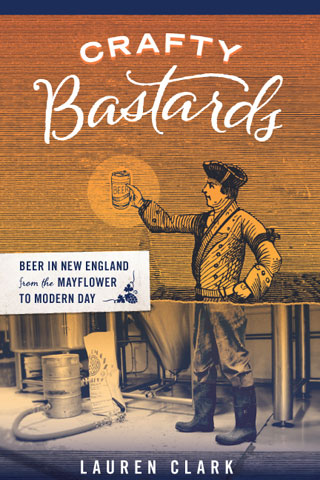Archive for the ‘Books & resources’ Category
March 13th, 2010
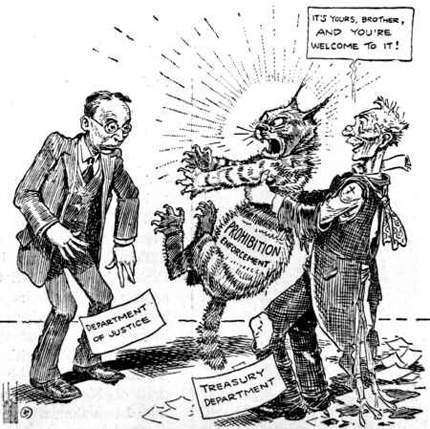
Anyone out there know if there’s a good college class on Prohibition? I would sign up for it. There is so much interesting stuff about big-P Prohibition (1919-1933) and various small-P prohibitions that just isn’t part of Americans’ knowledge of history (OK, there’s a lot lacking in Americans’ knowledge of history, but I’ll let another blogger tackle that). I did not know, for instance, until I read The Chemist’s War in Slate that there was a federal program to poison alcohol.
“Frustrated that people continued to consume so much alcohol even after it was banned, federal officials had decided to try a different kind of enforcement. They ordered the poisoning of industrial alcohols manufactured in the United States, products regularly stolen by bootleggers and resold as drinkable spirits. The idea was to scare people into giving up illicit drinking. Instead, by the time Prohibition ended in 1933, the federal poisoning program, by some estimates, had killed at least 10,000 people,” writes Deborah Blum. If it’s even close to being accurate, that number’s astonishing.
Prohibition-era President Calvin Coolidge, who had already, as governor of Massachusetts, made a name for himself by cracking down on striking Boston cops, showed his characteristic zeal for maintaining law and order by turning to “chemistry as an enforcement tool.” Wow, way to go, Silent Cal. Imagine if that sort of zeal was ever applied to enforcing regulations governing high finance… Ah, well. Then as now.
Equally as fascinating as the dark episode above: We think of Massachusetts as a pioneer in everything from establishing the New World to declaring independence from the Old World to letting gay people marry to mandating universal health insurance. But few people know that the Bay State was also a pioneer in prohibition. According to Perry R. Duis’ study The Saloon: Public Drinking in Chicago and Boston, 1880-1920, Massachusetts was the first to enact statewide prohibition, which, except for the years 1868 and 1871-3, lasted from 1852 to 1875. Of course, we had about as much success with our own noble experiment as the entire nation did some decades later. Duis writes:
“The wets claimed that arrests for drunkenness had not really declined as dramatically as citizens had earlier believed. Alcohol was obviously being produced or imported, and a secret distribution system placed it in the hands of thousands of drinkers… Charity workers and city missionaries worried aloud about the social problems that came from… secret consumption. Tenement doors concealed drunkenness, wife beating, and child abuse… Under license, the quality and purity of liquor could be regulated; now, inspection was virtually impossible.”
And on and on. See you in class.
Tags: 1920s, Calvin Coolidge, Massachusetts prohibition, Perry Duis, poison alcohol, Prohibition
Posted in Books & resources | 3 Comments »
February 14th, 2010
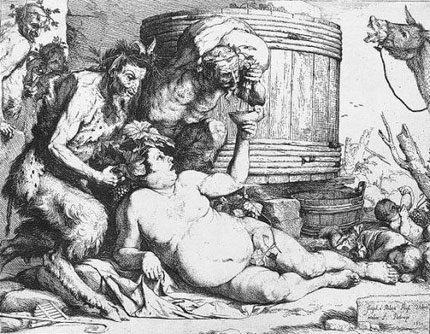
A fellow drinker said recently, “I just discovered you should never input your drinks into a calorie-counter app. No wonder I look like Santa Claus.”
Boozing makes you fat, right? Yes. No. Maybe. When it comes to alcohol and body weight, things get weird. That’s according to the scientific and medical literature out there on the web — a confusing hodgepodge of sites looking at alcohol consumption mostly from fitness, diet or addiction perspectives, or sites representing incompatible agendas, i.e. MADD vs the Distilled Spirits Council of the United States, or the NIH vs the BATF. Of course, there are plenty of dense scientific articles on PubMed, but making sense of those and coming to any useful, real-world conclusions is a task I would only undertake for a lot of money.
In a way, it seems simple: alcohol has calories, and if you consume too many calories without burning them, you’ll gain weight. It’s funny how many people don’t realize that alcohol itself, aside from sugary mixers or carbs in beer, is calorie-rich. In fact, pure ethanol has 7 calories per gram compared to 4 for carbs and protein and 9 for fat. Of course, we don’t drink pure ethanol; we drink drinks. So here are some more relevant numbers based on the caloric content of various alcoholic beverages (according to CalorieKing) and recipes that represent the sort of cocktails that drinkbostonians are likely to consume.
- Fort Point (among the many “Manhattan variations” out there): 2 oz rye whiskey, 1/2 oz Punt E Mes, 1/4 oz Benedictine: 174 calories.
- Margarita: 2 oz tequila, 1 oz Cointreau, 3/4 oz lime juice: 223 calories.
- Martini: 2 oz gin, 1 oz vermouth: 173 calories.
- Gin and tonic: 143 calories.
Now, for comparison’s sake …
- Coca Cola (12 oz): 143 calories.
- Narragansett (12 oz): 152 calories.
- Sierra Nevada Bigfoot Barleywine (12 oz, 10% abv): 330 calories.
- Red or white Wine (5 oz): roughly 120-130 calories.
So, if you take the generic, 2,000-calorie daily intake on which standard nutrition labels are based, and you add up the two Fort Points, three glasses of wine, and beer nightcap you might consume on a night off — roughly 875 calories — you have 1125 calories left for food if you want to avoid gaining weight. Which means eating like a supermodel without any of the financial benefits. Depressed yet?
But wait. “Scientists have not been able to tie alcohol consumption consistently to weight gain,” according to this article on ShapeFit. Huh? It continues, “Researchers have also found that heavy drinking reduces body fat, but still others point to evidence that it raises the risk of becoming overweight or obese. There may never be a simple answer, since there are so many variables.”
Oh, those pesky variables. You’ve got to, for instance, stack up your eating patterns against your drinking patterns. Do you tend to eat — and eat a little more than you normally would — whenever you go out drinking? Or does your boozing often replace food and other types of caloric beverages? Also: Are you genetically programmed to be an alcohol-metabolizing machine? And perhaps the peskiest variable of all explaining why there “may never be a simple answer” to what role alcohol plays in weight gain: “People in studies are prone to under-report how much they drink, rendering many findings unreliable.”
Ah, yes. Under-reporting one’s booze intake is a rich, American tradition. It’s not surprising, given that our official definition of “drinking in moderation” is one drink per day for women, two for men. That’s not moderate, that’s puritanical. It’s like when nutritionists say that a serving of meat should be no bigger than a deck of cards. Oh, I guess that means I’m splitting this porterhouse steak with my date, plus the family of four sitting next to us.
My advice? Ditch the calorie-counting app, get some exercise, and pick up the recently reissued Drinking Man’s Diet, originally published in 1964. The guy who wrote it, Robert Cameron, died slender last year at age 98.
Tags: alcohol, calories, health, weight gain
Posted in Books & resources | 8 Comments »
January 25th, 2010
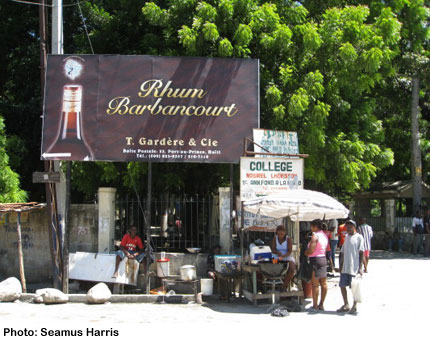
» HAITI. Like a lot of people responding to the needs of disaster-striken Haiti, I’ve been texting donations to the Red Cross, over-tipping Creole-speaking cab drivers, and ordering Haitian rum (or rhum) at bars. Recently, Drink joined several bars across the country in fundraising for Haiti by creating a menu of drinks using quality rhums agricoles and donating some of the proceeds to Doctors Without Borders. If you’re near Fort Point this week, pop by and raise a glass to an urgent cause.
» BENEDICTINE. Congrats to Jackson Cannon of Eastern Standard for being one of five finalists from around the country in Benedictine Liqueur’s “Alchemists of Our Age” cocktail contest. The contest, which marked the 500th anniversary of the French herbal elixir, announced its winner earlier this month: Damon Dyer of Louis 649 in New York City. The finalists, along with their cocktails, are featured in the January 2010 issue of Esquire. Check out Boston Herald writer Julia Rappaport’s blog post about Boston bartenders and Benedictine, and Dyer’s and Cannon’s recipes below.
Monte Cassino
Damon Dyer
3/4 part Benedictine Liqueur
3/4 part yellow Chartreuse
3/4 part fresh lemon juice
3/4 part Rittenhouse Rye
Shake, fine-strain into a chilled coupe (or small cocktail glass). Lemon twist garnish.
Vincelli Fizz
Jackson Cannon
1 egg white
1 1/2 part Benedictine Liqueur
1 1/2 part house-made rose vermouth
1/2 part fresh squeezed lemon juice
Dry-shake above ingredients to emulsify. Add ice and shake again until well chilled. Pour into a coupe glass. Top with 1 ounce Champagne. Garnish with flamed madjool date essence. Proportions to be adjusted as needed for variations in vermouth and citrus.
» IRISH WHISKEY. My friend Lew Bryson, a beer and spirits writer based in PA, recently called to pick my brain about Irish whiskey. We both admitted being confounded over the assertion (made by Spirit Journal editor Paul Pacult, among others) that Irish is the fastest-growing spirits category in the U.S. That’s because neither of us are noticing it being downed in greater-than-usual quantity, at least not in the places we drink. How is all this whiskey being consumed, we asked? As shots alongside a Guinness (my fave method)? On the rocks, like Scotch? In cocktails? We guessed one of the first two, since there just aren’t a lot of cocktails containing Irish whiskey.
I addressed that dearth recently when I brought my brother to Drink for his birthday and introduced him to the fabulous Red Breast, pot-still Irish whiskey. Misty Kalkofen gamely created a cocktail with the stuff, which was delicious and needs a name: 2 1/4 oz Red Breast Irish whiskey, 1/4 oz Punt e Mes, 1/4 oz green Chartreuse, stirred well over ice and strained into a chilled rocks glass.
» ULTIMATE BEVERAGE CHALLENGE. Speaking of Paul Pacult, he is leading the launch of the Ultimate Spirits Challenge, a judging event that aims to evaluate spirits with the “most authoritative, accurate and consistent results.” Part of the overall Ultimate Beverage Challenge, the first-ever spirits challenge takes place March 1-3 at Astor Center in New York City, followed by the Ultimate Cocktail Challenge in April. Check it out.
» SCOFFLAW. Did you know that January 16 was the anniversary of the official coining of the term “scofflaw,” for which the Scofflaw cocktail is named? And that the word came about as the result of a contest held by the Boston Herald in 1923? I didn’t either! It was one of those “I can’t believe I didn’t freakin’ know about this” revelations.
“The Scofflaw drink followed the coining of the actual term by less than two weeks,” writes Ted Haigh in Vintage Spirits and Forgotten Cocktails. “Another invention of Harry’s New York Bar in Paris, the cocktail hilariously baited Prohibition sensibilities.” Read more about it in the intro to Robert “DrinkBoy” Hess’ video about the Scofflaw. And thanks to Paul Harrington for being perhaps the first modern drinks writer to mention the history of the word and the cocktail.
» BOSTON DRINKING SOCIALS. Finally, this just in from Stuff Boston: Great Minds Drink Alike: Local booze crews give the term “social drinking” a whole new meaning.
Tags: Benedictine, Boston clubs, Haiti, Irish whiskey, Paul Pacult, rhum agricole, Scofflaw, Ultimate Beverage Challenge
Posted in Books & resources, Cocktails, Liqueur, Nips, Rum, Whiskey | 17 Comments »
November 24th, 2009
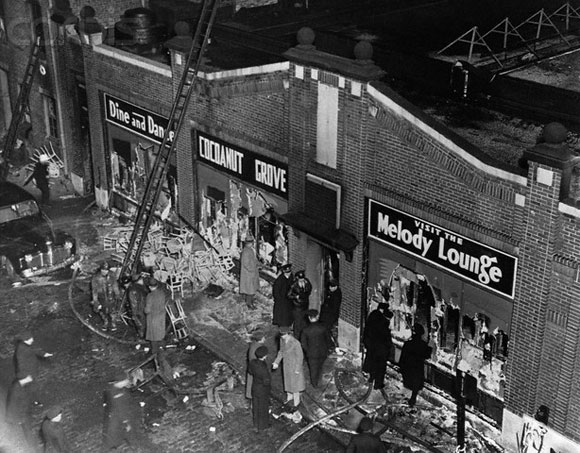
Not to dampen your holiday spirit, but if you’re out on the town this Saturday, November 28, you might take a moment to drink to the memory of Boston’s infamous Cocoanut Grove fire — the worst nightclub fire in history — which claimed almost 500 lives that night back in 1942.
Formerly a speakeasy, the swanky South End club had three bars and a ballroom that was decorated with highly flammable paper palm trees and cloth covering the ceiling and walls. The fire started when a busboy lit a match near one of the palm trees where he was replacing a lightbulb. As flames rapidly engulfed the club, many in the over-capacity crowd were trapped; the revolving-door main entrance jammed, and the other exits were locked or blocked. Within 15 minutes, 492 people were dead or dying. In the aftermath of the tragedy, fire safety codes, manslaughter law and medical treatment for burns and lung injuries were transformed.
If you’re a student of Boston and bar history as I am, you might want to check out “The Haunting Legacy of the Cocoanut Grove Fire” on the anniversary of the tragedy. It’s a free, illustrated lecture by former Boston Herald reporter Stephanie Schorow, who authored The Cocoanut Grove Fire. I befriended Schorow in the course of doing my own research on bar-related Boston topics, and her book is a fascinating read. Her talk, which will feature newly discovered photos and explore various theories about the cause of the fire, happens on the 28th from 5:00-7:00 p.m. at Jamaicaway Books & Gifts, 676 Centre St. in Jamaica Plain.
The Boston Globe published a detailed remembrance of the Cocoanut Grove fire on its 50th anniversary in 1992, and the article serves as a good primer about the tragedy. One interesting tidbit among the hundreds connected to the event: one of the waiters who escaped the fire, Chico Adolf Cecchini, soon after began working at Locke-Ober, where he was headwaiter for about 40 years.
Tags: 1942, Boston history, Cocoanut Grove, fire, nightclub
Posted in Books & resources, Boston bars | 12 Comments »
October 9th, 2009
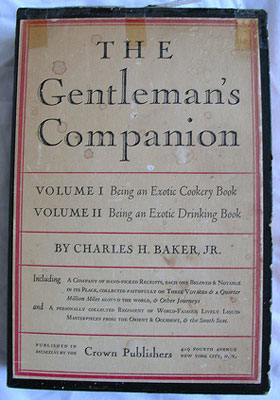 Earlier this year, Nightclub & Bar magazine published an article I wrote on the resurgence of vintage cocktail books and the bartenders who love them called Tools of the Trade: Jiggers, Shakers and Out-of-Print Books. This was just after Mud Puddle books, the EUVS (Exposition Universelle des Vins et Spiriteux) and others became known for reissuing these obscure, old volumes, whose original editions had been selling for crazy money online. We have crossed over to a new world now — a world in which David Embury’s The Fine Art of Mixing Drinks and Harry Johnson’s Bartenders’ Manual and Guide for Hotels and Restaurants can be had for the price of a couple of cocktails, if not entirely free.
Earlier this year, Nightclub & Bar magazine published an article I wrote on the resurgence of vintage cocktail books and the bartenders who love them called Tools of the Trade: Jiggers, Shakers and Out-of-Print Books. This was just after Mud Puddle books, the EUVS (Exposition Universelle des Vins et Spiriteux) and others became known for reissuing these obscure, old volumes, whose original editions had been selling for crazy money online. We have crossed over to a new world now — a world in which David Embury’s The Fine Art of Mixing Drinks and Harry Johnson’s Bartenders’ Manual and Guide for Hotels and Restaurants can be had for the price of a couple of cocktails, if not entirely free.
Much like I did with Boston-area bartenders a while back, I got in touch with a bunch of bartenders nationwide about their favorite old cocktail and bartending books, and whether they had ever spent big bucks on a must-have, brittle-paged tome of yore. Only tiny bits of their entertaining and thoughtful responses made it into the article. So, like any good blogger, I present here some outtakes, in no particular order, that didn’t make it into print. One thing that’s clear in both the print piece and the commentary below: everyone loves Charles Baker’s The Gentleman’s Companion, Vol. II (1939). But not for the recipes.
(The Gentleman’s Companion, Vol. II was republished in 1992 as Jigger, Beaker and Flask: Drinking Around the World. Most of Mud Puddle’s books can be found locally at the Boston Shaker.)
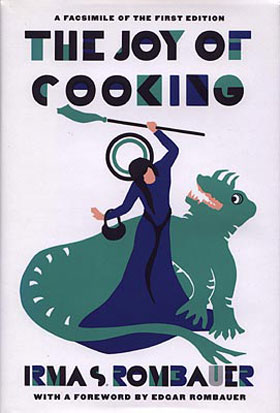 Stephen Cole, Violet Hour, Chicago
Stephen Cole, Violet Hour, Chicago
To be honest, my favorite cocktail books are old cookbooks. Back then they had to plan entire parties just from one book — all the way from pairing the wine with the meal, bottle service, table set-up, carving out blocks of ice for punches, and even how to take down a whole cow from the field to the table. With my background of cooking for about 10 years, it was fun to go back to these old books that I had for that, and find traces of punch recipes from [Jerry] Thomas himself. I say the Joy of Cooking, by Rombauer (1931).
Alex Day, Death + Company, New York
I should probably give you a general impression of how I feel about vintage cocktail books. I consider myself a professional bartender and am very passionate about what I do, but I’ve been eyeing the craze toward snatching up vintage cocktail books with a bit of skepticism. To me, the trend likens itself more toward the trappings of specific, hard-to-find antiques than it does to actually serving customers and expanding one’s craft.
And then there’s getting all sociological with this. American bartenders are constantly being told that our heritage and heyday lie in pre-Prohibition cocktails, and that the time between the Great Experiment and the recent classics revival has been marred by crap. We find ourselves looking back desperately to a time when the barman deserved the respect and admiration of his community and patrons, so I think there’s a real need to acquire these books to, in a way, legitimize what we’re doing with this revival.
For me, the absolute best vintage cocktail book in my collection is Charles H. Baker, Jr.’s The Gentleman’s Companion. Would I ever use a recipe from this book? No way. For me, the magic is in the writing and the story telling. What I have personally gotten from this book? A more relaxed approach to cocktails. An ethos that says: this is just cocktails. Sure, they’re damn good cocktails, but really, we’re here in this bar enjoying our lives, enjoying the people in our lives, enjoying the spirits in our glass, and enjoying the world.
Joaquin Simo, Death + Company, New York
My favorite is probably Charles H. Baker Jr.’s Gentleman’s Companion and his South American Gentleman’s Companion. While there are certainly some diamonds in the rough to be found recipe-wise, the real pleasure of reading those books lies in his inimitable prose. He drank with the best writers of his time and was surely their equal behind a typewriter as well as behind the stick.
Josey Packard, Drink, Boston
[While working for the Alembic bar in San Francisco], I looked on web sites that specialize in antiquarian books for Thomas’s How to Mix Drinks and found that at that time the first and second editions were going for around $1000. But one search — on half.com of all places — showed that among the slew of recently published ones for around $15, there was a seller listing one at $200. He mentioned some cover wear and pencil marks, and I just had a feeling about it — that he had an old one and had misunderstood how to list it properly. What came was the 1876 second edition, with some worm damage on the spine but otherwise in excellent shape. I held it and held it and held it, and ultimately sold it to Alembic for the purchase price, as my overdeveloped sense of morality told me that because I was searching on Alembic’s behalf at the time they should get it. I still feel ambivalent about it, though it is a real centerpiece of their library and is a real feather in their cap.
As pedestrian as it sounds, I keep coming back to the Savoy Cocktail Book (1930). Its completeness is unparalleled, though I almost never use the recipes as they don’t tend to be delicious as listed. The most beautiful book I own is Still Life With Bottle: Whisky According to Ralph Steadman (1997). The most useful book, being the book that taught me what I knew nothing about, is Folk Wines, Cordials, and Brandies by M. A. Jagendorf (1963). The most unusual, yet useful, cocktail history book I have is Convivial Dickens by Edward Hewett and W. F. Axton (1983), in which all of the instances in which Dickens mentions or describes drinking in his fiction are extrapolated and explained, with modern equivalents for recipe experimentation. If a person is to have one cocktail book, and only one, I’d pick Joy of Mixology (2003). The graph section is the most useful innovation I’ve yet seen in helping people understand how drinks are related.
Jeffrey Morgenthaler, Portland, OR
[After Baker], the second book I pick up more than just about any other is not neccessarily vintage, but certainly rare and very much out of print. That book is called Cocktail: The Drinks Bible for the 21st Century, by Paul Harrington. This may very well be the most influential writing for me, as Harrington’s philosophies about cocktails most closely reflect my own. I know it’s only about 10 years old, but it’s quite rare and very much prized, especially among bartenders.
I haven’t spent a great amount of money on any one book — I’m too much of a bargain hunter to put up with that. I’m also a total douchebag, so I like to scour the mom-and-pop used bookstores in small towns around Oregon, picking up gems for a song while they’re none the wiser. At least I never sell them for a profit. I did get into an all-out bidding war for an early edition of The Old Waldorf-Astoria Bar Book many years ago and can’t help but think that other person is now one of my friends, Paul Clarke or something.
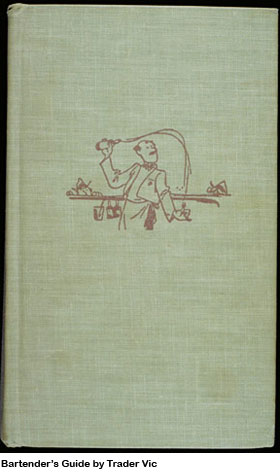 Marcos Tello, The Edison, The Varnish, L.A.
Marcos Tello, The Edison, The Varnish, L.A.
I actually have three favorites: Bartender’s Guide by Trader Vic (1947) — the recipes in this book are very similar to the modern breakdown of “classic” cocktails that many use today; Bottoms Up by Ted Saucier (1951) — there are a lot of great cocktails in this book, especially cocktails that originated from California; and the lesser known Home Made Beverages by Albert Hoskins (1891) — this book is a complete encyclopedia of syrups, phosphates, bitters, etc.
Kirk Estopinal, Cure, New Orleans
Charles Baker’s Gentleman’s Companion series. I know everyone loves this one, but as a read it really brings you into a high-minded, romantic setting of drinking in the days of old. Verbose as Zelda Fitzgerald and humorous as the small fraction of good stand-up comedy. The needle in the haystack of cocktail guides.
Partick Gavin Duffy’s Official Mixers Manual (1934). The intro itself is enough to make me love this book: “Bartending is an honorable trade. It is not a profession, and I have no sympathy with those who try to make it anything but what it was. The idea of calling a bartender a professor or a mixologist is nonsense.” YIKES! This guy is pissed off at someone. The recipes are fantastic, though — actually functional, unlike some other classic “guides.” Cool glassware diagrams as well as all drinks coded with their corresponding glass. I bet Wondrich likes this guy.
Esquire’s Handbook for Hosts (1949). Hundreds of recipes that mostly work. Serves as connective tissue for someone looking for the lineage of classics. The illustrations are a plus. And the overall idea that this is a guide to throw parties, down to tone of voice and what not to say in mixed company. Civility with a little sexism — a look back into the mindset of old.
Ted Haigh, aka Dr. Cocktail, L.A.
I have a number of favorite cocktail books, though some of my faves have changed over time. Generally there is a specific characteristic of each beloved tome that hoists it up on my dais.
For the shear joy of recapturing a past era’s less-traveled wonder at far away places with their strange-sounding names, I think all drink nerds will point definitively at Chas. Baker. It is mixology-as-literature, just as Hemingway is literature-as-mixology. I seldom make drinks from it — it is very uneven in that regard — but as a sip inducer, it sets the mood like no other.
For inspiration courtesy of the best layout any cocktail book ever had, I go with an obscure little book named The How and the When by Hyman Gale, a bar guide first published in Chicago in 1937. Contrary to conventional wisdom, this is no wonderland of graphical grace like Harry Craddock’s Savoy Cocktail Book, or a gilt-edged beauty like Cocktail Fashions of 1936. It is printed on semi-gloss coated stock, with black ink, devoid of any decoration. What makes this book such an unduplicated joy to use are the concise two columns of recipes in simple type on each page. No hyperbole, no flourishes, just a drink’s title in one font larger, and a clear, easy to read recipe in smaller simple serif type below it. This is a book to ponder recipes in. They may have been published elsewhere first, but this is my favorite wellspring for their rediscovery.
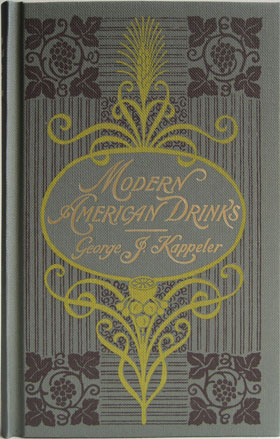 I’ve been at the forgotten cocktail game for a long time. As such, my go-to sources for unrevived cocktails change over time. Currently, I have three. One is nearing the end of its reign at the top, one is front and center, and one has only begun to be tapped. In that order, they are: Barflies & Cocktails by Harry McElhone (where I lavish my attention on the section of drinks about town by Arthur Moss). The next is the Waldorf Bar Book by Albert Stevens Crockett. Here you get a half-book narrative of old New York, and half recipes. Of those recipes, a vast number would today be considered variations (minute variations) on the classic Martini. Gin, vermouth (or none,) bitters (or none), where the entirety of the differentiation is in proportion, brand, type and, of course, name. These recipes, frankly, make this a hard book to browse with much enthusiasm, but the great secret is that, excluding those recipes, many of the rest are strictly uncommon and startlingly good. And the newcomer in this category is… Modern American Drinks by George Kappeler. To taste the 19th century, this is where I am beginning to turn. Of the books I cite, this one, from 1895, is the oldest yet.
I’ve been at the forgotten cocktail game for a long time. As such, my go-to sources for unrevived cocktails change over time. Currently, I have three. One is nearing the end of its reign at the top, one is front and center, and one has only begun to be tapped. In that order, they are: Barflies & Cocktails by Harry McElhone (where I lavish my attention on the section of drinks about town by Arthur Moss). The next is the Waldorf Bar Book by Albert Stevens Crockett. Here you get a half-book narrative of old New York, and half recipes. Of those recipes, a vast number would today be considered variations (minute variations) on the classic Martini. Gin, vermouth (or none,) bitters (or none), where the entirety of the differentiation is in proportion, brand, type and, of course, name. These recipes, frankly, make this a hard book to browse with much enthusiasm, but the great secret is that, excluding those recipes, many of the rest are strictly uncommon and startlingly good. And the newcomer in this category is… Modern American Drinks by George Kappeler. To taste the 19th century, this is where I am beginning to turn. Of the books I cite, this one, from 1895, is the oldest yet.
Yet, there is one older… my final fave. The vastly-titled New Guide for the Hotel, Bar, Restaurant, Butler & Chef by “Bacchus & Cordon Bleu” wins my quirkiest oddball drink book award. I’ll assert it is also the progenitor of that category. You see, not only does one make drinks from the recipes in this 1885 book, one makes the liqueurs — potions, really — that go into those drinks. No drink guide has ever been so arcane. So if you fancy a beverage prepared with Liqueur Excelsior, or perhaps Liqueur Criterion, this is where you must turn.
Tags: Charles Baker, David Embury, Harry Johnson, Irma Rombauer, Jerry Thomas, Trader Vic, vintage cocktail books
Posted in Bartenders, Books & resources | 4 Comments »




 Earlier this year, Nightclub & Bar magazine published an article I wrote on the resurgence of vintage cocktail books and the bartenders who love them called
Earlier this year, Nightclub & Bar magazine published an article I wrote on the resurgence of vintage cocktail books and the bartenders who love them called  Stephen Cole, Violet Hour, Chicago
Stephen Cole, Violet Hour, Chicago Marcos Tello, The Edison, The Varnish, L.A.
Marcos Tello, The Edison, The Varnish, L.A. I’ve been at the forgotten cocktail game for a long time. As such, my go-to sources for unrevived cocktails change over time. Currently, I have three. One is nearing the end of its reign at the top, one is front and center, and one has only begun to be tapped. In that order, they are: Barflies & Cocktails by Harry McElhone (where I lavish my attention on the section of drinks about town by Arthur Moss). The next is the Waldorf Bar Book by Albert Stevens Crockett. Here you get a half-book narrative of old New York, and half recipes. Of those recipes, a vast number would today be considered variations (minute variations) on the classic Martini. Gin, vermouth (or none,) bitters (or none), where the entirety of the differentiation is in proportion, brand, type and, of course, name. These recipes, frankly, make this a hard book to browse with much enthusiasm, but the great secret is that, excluding those recipes, many of the rest are strictly uncommon and startlingly good. And the newcomer in this category is… Modern American Drinks by George Kappeler. To taste the 19th century, this is where I am beginning to turn. Of the books I cite, this one, from 1895, is the oldest yet.
I’ve been at the forgotten cocktail game for a long time. As such, my go-to sources for unrevived cocktails change over time. Currently, I have three. One is nearing the end of its reign at the top, one is front and center, and one has only begun to be tapped. In that order, they are: Barflies & Cocktails by Harry McElhone (where I lavish my attention on the section of drinks about town by Arthur Moss). The next is the Waldorf Bar Book by Albert Stevens Crockett. Here you get a half-book narrative of old New York, and half recipes. Of those recipes, a vast number would today be considered variations (minute variations) on the classic Martini. Gin, vermouth (or none,) bitters (or none), where the entirety of the differentiation is in proportion, brand, type and, of course, name. These recipes, frankly, make this a hard book to browse with much enthusiasm, but the great secret is that, excluding those recipes, many of the rest are strictly uncommon and startlingly good. And the newcomer in this category is… Modern American Drinks by George Kappeler. To taste the 19th century, this is where I am beginning to turn. Of the books I cite, this one, from 1895, is the oldest yet.